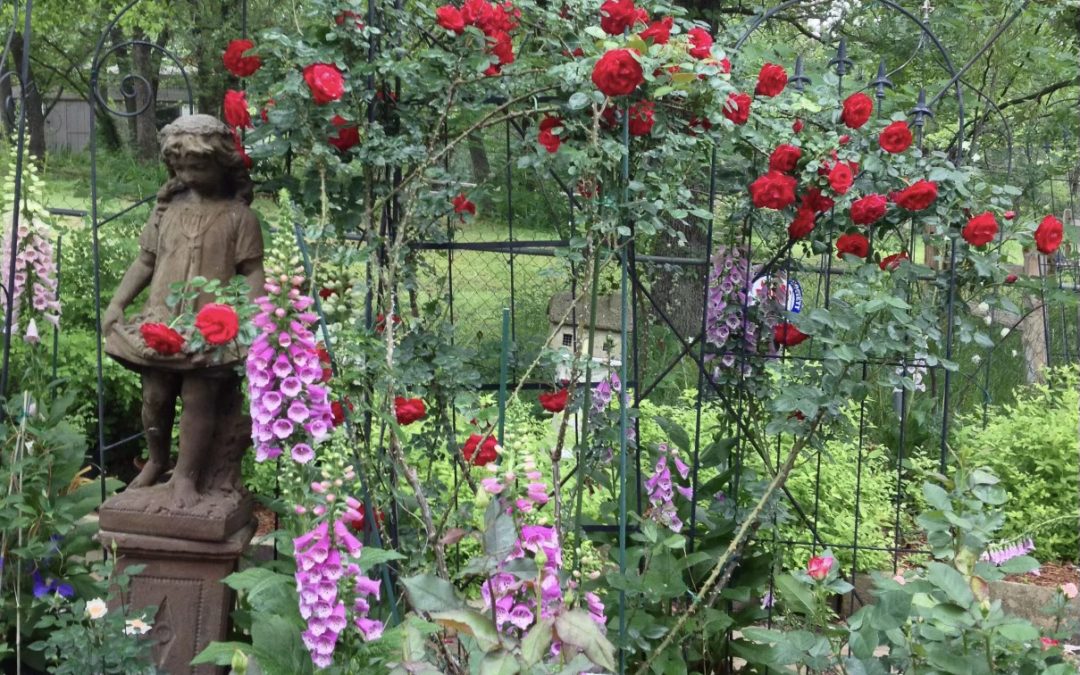Featured Rose
Pictured above: Tess of the d’urbervilles, a David Austin, from the garden of Don & Brenda Johnson
Pruning Roses Videos
Two great You tube Pruning Videos
https://youtu.be/CJUS3eFEHrk Garden Inspired Jackson Perkins Paul Zimmerman. Great advice on tools. Made me smile. I prefer leather gloves that come all the way to by elbows
https://youtu.be/l4xaorRjU0I. How to Prune Roses in the Spring, Shirley Bovshow
Pruning Wisdom from Judith Carter
March is the time to prune. We need to wait until the chance of hard
freezes are past, which generally is the first day of spring but we can be
fooled with a late freeze. The snows really gave us some good moisture,
but watering is a must if it gets dry.
Control the size of the bush. In our climate, with good cultivation, bushes
can get out of hand. Many of us like large bushes on the theory that a big
bush will produce more roses than a little one, but they can only outgrow
the allotted space and can get too tall to tend properly.
Shape the bush. There are two things to consider here and most important is
to try to give each branch a chance to take advantage of the available space
and light. The other reason is aesthetic and that probably is least
important from the standpoint of the health of the bush. The beautiful
vase-shape illustrated in the pruning books is nice and if it can be
accomplished after the other objectives are accomplished, fine.
It is time for the first feeding also. Decide upon a program for the year
and make the first application. You should always water before fertilizing.
You may need to pull back the mulch and spread the material and lightly work
it into the soil. Water again following the feeding.
You may want to spray the ground for insects and fungus possibilities before
replacing the mulch. Add to your mulch and you will want to protect the bud
union for another month until all chance of freezing is past.
If foliage is not appearing you should apply a dormant spray. If foliage is
already appearing it is time to start your regular spray program. It is
important to spray weekly or even more often as the new foliage appears.
Your regular spraying should be for blackspot and only spray when you have
insect problems. There are many beneficial insects that can help your
roses. Don’t kill them!
If you do not see growth emerging from a rose, the drought or winter weather
may have gotten it. It will be time to shovel-prune it and prepare the bed
for a new rose.
Enjoy the beauty as it comes!
Judith Carter is a Rose Rosarian, Tulsa Rose Society
Soil Testing
Providing nutritious soil is one of the best things you can do for your garden. The OSU Extension Office can test your soil. Follow the instructions, then take your samples to their office on 15th Street. It takes about 2 weeks for the report which will tell you what nutrients your soil needs.
I took in my soil samples this past week and will be sharing the results in the Rose Blog.
Bev



Recent Comments